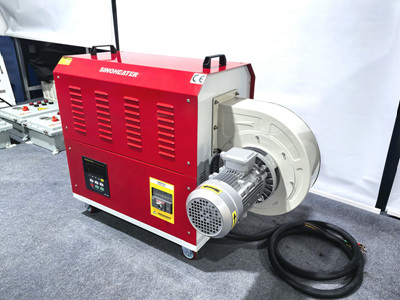How to Select a Heat Blower Based on Power Adjustment Range for Optimal Performance
When choosing a heat blower, understanding its power adjustment range is critical to ensuring it meets your specific heating needs. A flexible power range allows the device to adapt to varying environments, improve energy efficiency, and maintain precise temperature control. Below are key factors to consider during the selection process.
Understanding Power Adjustment Specifications
The power adjustment range of a heat blower determines how effectively it can modify heat output to suit different scenarios. Look for models that offer a wide spectrum—from low-power settings for small spaces or mild conditions to high-power modes for rapid heating in larger areas. This adaptability ensures the unit operates efficiently without overworking or underperforming.
For industrial applications, such as warehouses or workshops, a broader power range enables the heat blower to handle fluctuating temperatures and airflow demands. In contrast, residential or office settings may prioritize quieter, lower-power operations for comfort. Always verify the manufacturer’s stated range and ensure it aligns with your intended use cases.
Matching Power Range to Space Size and Heating Requirements
The relationship between power output and space dimensions directly impacts heating effectiveness. A heat blower with insufficient power for a large area will struggle to maintain consistent warmth, while an overly powerful unit in a small room may cause discomfort or energy waste.
Start by calculating the cubic footage of the space you need to heat. Compare this with the heat blower’s minimum and maximum power settings to determine if it can scale up or down as needed. For example, a garage requiring intermittent heating during repairs benefits from a model that can switch between gentle background warmth and intense, focused heat.
Additionally, consider insulation and ventilation. Poorly insulated areas demand higher power settings, while well-ventilated spaces might require adjustable airflow to prevent heat loss. A heat blower with a customizable power range accommodates these variables seamlessly.
Evaluating Energy Efficiency and Operational Costs
A heat blower’s power adjustment range influences its long-term energy consumption. Units with granular control over power settings—such as step-less adjustment or multiple preset modes—allow users to fine-tune output to exact requirements, reducing unnecessary energy use.
Prioritize models equipped with smart sensors or thermostats that automatically adjust power based on ambient temperature. This feature prevents overheating and ensures the device runs only when needed, lowering electricity costs. For environments requiring constant heat, such as greenhouses or livestock shelters, a heat blower with a steady yet adjustable power range maintains stability without frequent manual intervention.
Check for energy certifications or efficiency ratings, as these indicate compliance with industry standards for sustainable performance. A heat blower that balances power flexibility with low energy consumption provides both environmental and economic benefits over time.
Additional Features to Enhance Power Adjustment Functionality
Beyond the core power range, certain features can elevate a heat blower’s usability. Remote controls or mobile app integration enable users to modify settings from a distance, ideal for adjusting heat output in hard-to-reach areas or during off-hours.
Timer functions are another valuable addition, allowing the device to operate at specific power levels during predefined periods. For instance, setting a heat blower to run at low power overnight in a workshop prevents freezing pipes without incurring high costs.
Finally, noise levels often correlate with power settings. If quiet operation is essential, seek models that minimize sound output even at higher power ranges. This is particularly important in shared spaces like offices or residential basements, where excessive noise can disrupt daily activities.
By prioritizing these aspects, you can select a heat blower that delivers reliable, adaptable heating tailored to your unique needs.




